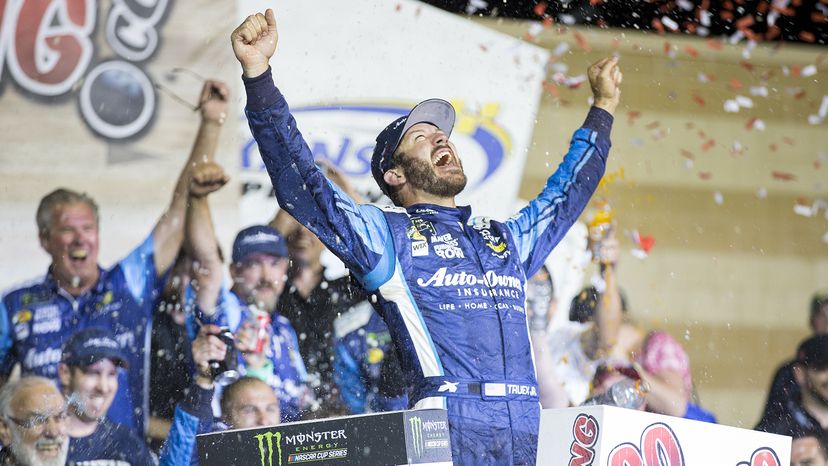NASCAR Prize Money Explained: How Drivers and Teams Get Paid in 2024

Man celebrating with raised arms outdoors
NASCAR drivers earn their living through a complex payment system that combines multiple revenue streams. The sport traditionally relied on race purses, sponsorships, merchandise sales, and endorsements, but underwent significant changes with the 2016 introduction of the owner charter system.
The charter system created 36 guaranteed team positions in NASCAR, each valued differently based on historical performance and significance. These chartered teams receive:
- Guaranteed starting positions in every race
- Shared revenue from competing
- Performance-based compensation
- Points fund payouts
- Race purse money based on finishing position
Prize money remains substantial despite less transparency in the current system. The 2025 Daytona 500 offers a $30 million total purse, with the winner potentially earning up to $3 million. Regular season races typically offer purses between $8-10 million total.
Teams are classified into three tiers:
- A Teams: Top performers who receive the largest purses and bonuses
- B Teams: Mid-pack competitors with moderate rewards
- C Teams: Bottom third with smaller payouts
While teams get guaranteed revenue, individual driver compensation varies widely. Drivers may receive:
- Base salary from their team
- Percentage of race purses
- Performance bonuses
- Personal sponsorship deals
- Merchandise revenue
The charter system aims to create long-term value for team ownership while providing financial stability. Teams can sell or transfer their charters, though NASCAR can revoke them if a team consistently underperforms for three consecutive years.
For context, before the charter system, race winners could earn between $166,760 (smaller tracks) to over $1.5 million (major races like Daytona). Modern payouts remain competitive but are now distributed primarily to teams rather than individual drivers.
Related Articles

Progressive Insurance Named Primary Sponsor for Denny Hamlin's No. 11 Toyota

